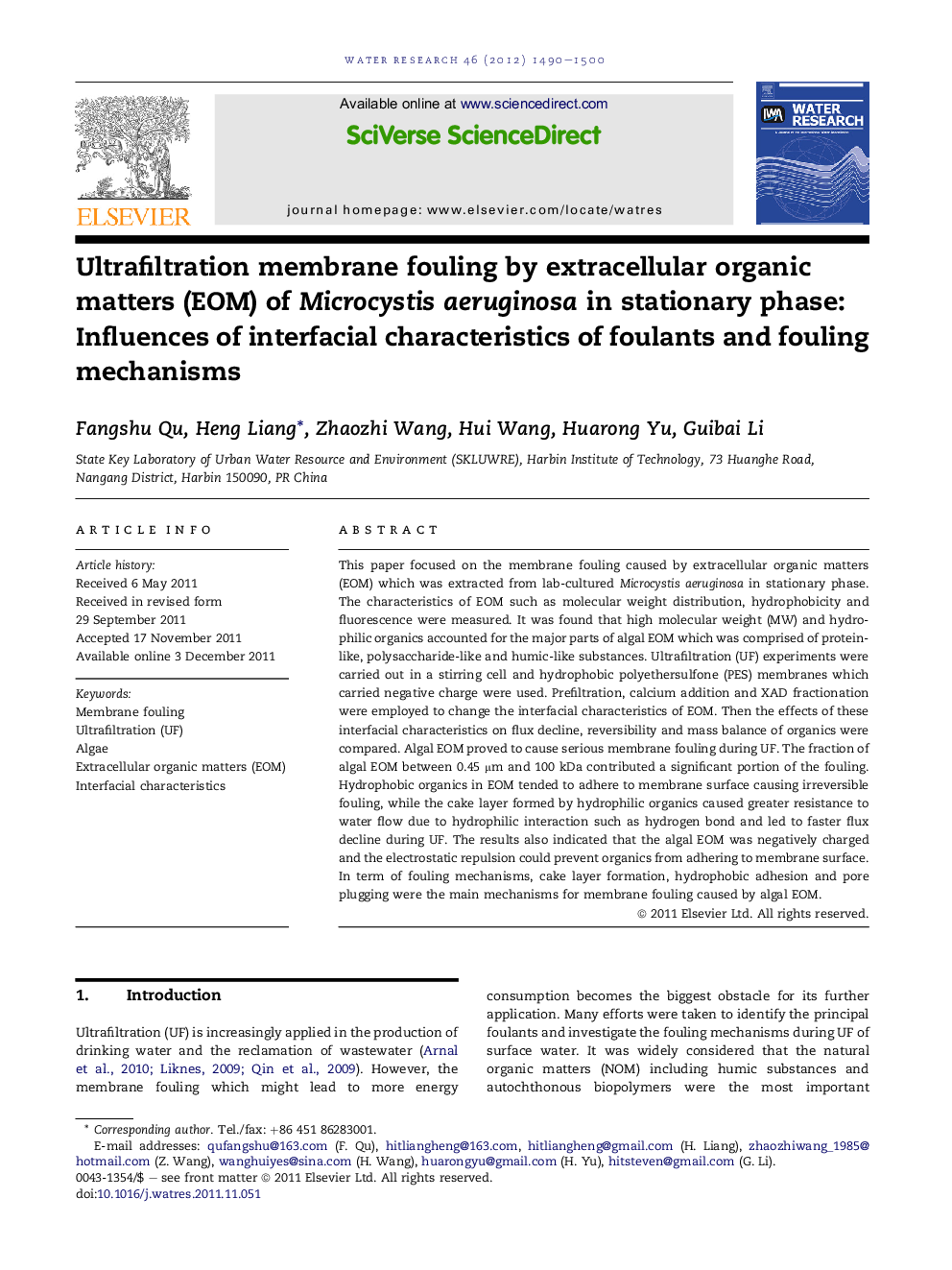| کد مقاله | کد نشریه | سال انتشار | مقاله انگلیسی | نسخه تمام متن |
|---|---|---|---|---|
| 4483629 | 1316894 | 2012 | 11 صفحه PDF | دانلود رایگان |

This paper focused on the membrane fouling caused by extracellular organic matters (EOM) which was extracted from lab-cultured Microcystis aeruginosa in stationary phase. The characteristics of EOM such as molecular weight distribution, hydrophobicity and fluorescence were measured. It was found that high molecular weight (MW) and hydrophilic organics accounted for the major parts of algal EOM which was comprised of protein-like, polysaccharide-like and humic-like substances. Ultrafiltration (UF) experiments were carried out in a stirring cell and hydrophobic polyethersulfone (PES) membranes which carried negative charge were used. Prefiltration, calcium addition and XAD fractionation were employed to change the interfacial characteristics of EOM. Then the effects of these interfacial characteristics on flux decline, reversibility and mass balance of organics were compared. Algal EOM proved to cause serious membrane fouling during UF. The fraction of algal EOM between 0.45 μm and 100 kDa contributed a significant portion of the fouling. Hydrophobic organics in EOM tended to adhere to membrane surface causing irreversible fouling, while the cake layer formed by hydrophilic organics caused greater resistance to water flow due to hydrophilic interaction such as hydrogen bond and led to faster flux decline during UF. The results also indicated that the algal EOM was negatively charged and the electrostatic repulsion could prevent organics from adhering to membrane surface. In term of fouling mechanisms, cake layer formation, hydrophobic adhesion and pore plugging were the main mechanisms for membrane fouling caused by algal EOM.
Figure optionsDownload high-quality image (233 K)Download as PowerPoint slideHighlights
► We examine the effects of interfacial characteristics of EOM on UF membrane fouling.
► The fraction of EOM between 0.45μm and 100kDa contributed a major portion of fouling.
► Hydrophobic organics in EOM tended to cause irreversible fouling by adhesion.
► Cake layer formed by hydrophilic organics caused faster flux decline.
► Negative surface charge could prevent organics in EOM from adhering to membrane.
Journal: Water Research - Volume 46, Issue 5, 1 April 2012, Pages 1490–1500